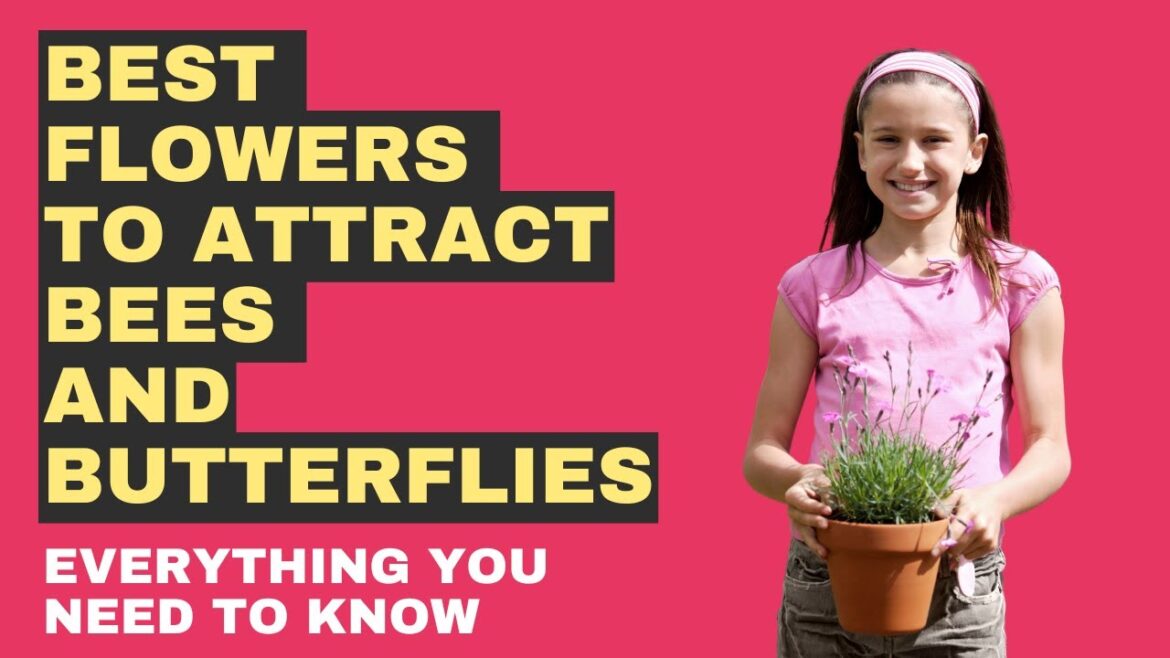Discover the best flowers to attract bees and butterflies and transform your garden into a buzzing paradise. In this video, you’ll learn about the top bee-friendly and butterfly garden flowers that will not only beautify your space but also support local biodiversity. The benefits of having a pollinator-friendly garden are endless, from increasing your fruit and veg yields to creating a lively atmosphere.
Learn about popular choices like lavender for bees and sunflowers for pollinators, which are easy to grow and a hit with these vital insects. We’ll also explore other fantastic options such as foxglove flowers, verbena plants, and echinacea flowers. These pollinator plants are perfect for any UK garden, whether you have a small balcony or a large outdoor space.
Find out how to create the perfect environment for your garden for bees and butterflies by choosing the right flowers. With tips on planting borage for bees, chives flowers, and early-blooming crocus bulbs, your garden will become a haven for pollinators. You’ll be supporting bee conservation and butterfly conservation while enjoying a vibrant garden full of life.
See how wildflower gardens can enhance your outdoor space and provide essential nectar-rich flowers for UK pollinators. These flowers for beginners are low-maintenance and can thrive in a variety of conditions. Get inspired with flower garden ideas that will have your garden buzzing with activity in no time.
Join us as we explore the advantages of these flowering plants and provide UK gardening tips for creating a pollinator-friendly garden. By following our advice, you’ll be making a positive impact on the environment and enjoying the beauty of nature right in your backyard.
For those looking to make a difference, this video is packed with actionable advice on how to attract bees and butterflies to your garden with the right flowers. Don’t miss out on the chance to learn how to create a thriving pollinator garden.
Steps to Create a Pollinator-Friendly Garden
Choose a variety of flowers that bloom at different times of the year to provide a continuous source of nectar and pollen.
Plant in clusters to make it easier for bees and butterflies to find the flowers.
Avoid using pesticides and opt for organic methods to protect the pollinators.
Ensure your garden has sunny spots and well-drained soil for the plants to thrive.
Consider adding a water source like a shallow dish with stones for the insects to drink from.
Provide shelter with shrubs or small trees to protect pollinators from predators and the elements.
Enjoy watching your garden come alive with buzzing bees and fluttering butterflies.
For more information, visit the UK Care Guide at www.ukcareguide.co.uk
Follow Us On Social Media
You can follow us for more actionable tips and advice on our social media channels:
Facebook – https://www.facebook.com/UKCareGuide
Instagram – https://www.instagram.com/ukcareguide
You can also subscribe to this channel by clicking this link – https://shorturl.at/noQX4
Copyright Notice – This video is the property of UK Care Guide Channel. You are authorised to share the video link and channel and embed this video in your website or others as long as a link back to our YouTube channel is provided.
© UK Care Guide
#bestflowersforbees #flowersforbutterflies #beefriendlyplants #butterflygardenflowers #pollinatorplants #attractbees #attractbutterflies #gardenforbees #gardenforbutterflies #lavenderforbees #sunflowersforpollinators #foxgloveflowers #verbenaplants #echinaceaflowers #coneflowers #borageforbees #chivesflowers #crocusbulbs #wildflowergardens #UKgardens #pollinatorfriendlyflowers #biodiversityflowers #UKpollinators #flowergardenideas #flowersforbeginners #UKgardeningtips #beegardentips #butterflygardentips #floweringplants #nectarrichflowers #beeconservation #butterflyconservation

